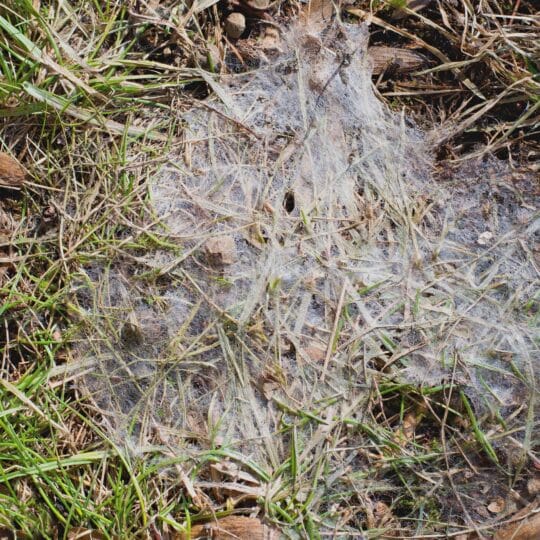6 Ways to Prevent Snow Mold
Lawn Care Maintenance Techniques
Posted
March 7, 2024

As the winter chill begins to fade and signs of spring appear, you may also notice a few signs of lawn disease. As white snow-covered landscapes transform to lush spring green grass, be on the lookout for gray or pink snow mold. This fungal disease can wreak havoc on your lawn, causing unsightly patches. Fortunately, preventing snow mold is achievable with the right maintenance techniques.
What is Snow Mold
There are two different types of snow mold: pink and gray. Both are a fungal disease that thrives in cool, wet conditions typically found during late winter and early spring. It manifests as circular or irregular patches of gray or pinkish-colored fungal growth on the surface of the lawn, often accompanied by matted, straw-colored grass blades. While it rarely causes permanent damage to turf grasses, it can be visually unappealing and weaken the overall health of the lawn if left untreated.
Snow mold thrives in certain wintery environments with the following factors:
- Snow cover. A blanket of snow acts as an insulator, creating a moist microclimate underneath where fungi can thrive.
- Cool temperatures. Typically ranging from just above freezing to around 50°F.
- Excessive moisture. Between melting snow, rain, or overwatering, you have the ideal conditions for fungal spores to germinate and spread.
While you may not be overwatering in the winter, some of these conditions could have originated before the snow started to fall. This is why preventative measures are so important.
Preventing Snow Mold
To protect your lawn from snow mold, keep the following preventive measures in mind all year long.
- Proper Lawn Maintenance: Maintain a regular lawn care routine that includes mowing at the appropriate height, aerating, and dethatching to promote good air circulation and reduce moisture buildup.
- Reduce Snow Accumulation: Whenever possible, gently remove snow from the lawn using a snow blower or shovel to minimize the duration of snow cover.
- Improve Drainage: Address areas in your yard prone to pooling water or runoff. This may involve grading the landscape, installing drainage systems, or amending the soil to improve its water-holding capacity.
- Avoid Overwatering: Make sure your lawn in properly watered in the fall. Water deeply but infrequently to encourage deep root growth and minimize surface moisture. Watering in the morning allows sufficient time for the grass to dry during the day, reducing the risk of fungal infections.
- Promote Air Circulation: Prune overhanging branches, thin out dense foliage, and avoid planting grass in shaded areas to improve air circulation and sunlight penetration, which helps inhibit fungal growth.
- Reseed with Resistant Varieties: Consider overseeding your lawn with turf grass varieties known for their resistance to snow mold, such as certain types of perennial ryegrass or fescue.
Snow mold may pose a threat to the health and aesthetics of your lawn, especially during the transition from winter to spring. However, by taking proactive steps to address underlying factors such as moisture buildup and poor air circulation, you can significantly reduce the risk of fungal infections and keep your lawn looking its best throughout the growing season. Contact Cardinal Lawns to help implement a comprehensive lawn care regimen to promote a vibrant, disease-free lawn for years to come.

Download Your FREE Lawn Disease Guide
Even the most manicured landscapes are susceptible to lawn disease. Take some time to learn about identification and removal before one takes over your lawn. This handy guide teaches you how to spot common lawn diseases as well as how to properly treat them.